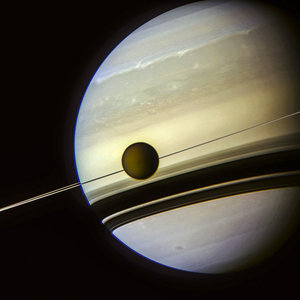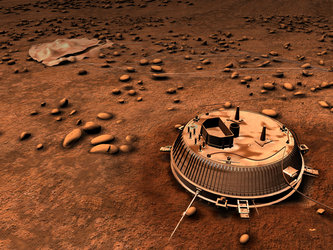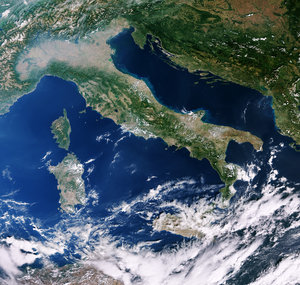Giant landslide on Iapetus
A spectacular landslide within the low-brightness region of Iapetus's surface, known as Cassini Regio, is visible in this image from the NASA/ESA/ASI Cassini spacecraft.
Iapetus is one of the moons of Saturn. Landslides are common geological phenomena on many planetary bodies, including Earth and Mars. The appearance of this landslide on an icy satellite with low-brightness cratered terrain is reminiscent of landslide features that were observed during NASA's Galileo mission on Callisto, a moon of Jupiter.
The landslide material appears to have collapsed from a scarp 15 kilometres high that forms the rim of an ancient 600-kilometre impact basin. Rubble from the landslide extends halfway across a conspicuous, 120-kilometre diameter flat-floored impact crater that lies just inside the basin scarp.
The fact that the Iapetus landslide travelled many kilometres from the basin scarp could indicate that the surface material is very fine-grained, and perhaps was fluffed by mechanical forces that allowed the landslide debris to flow extended distances.
The Cassini-Huygens mission is a co-operative project of NASA, ESA and ASI, the Italian space agency.
Image credit: NASA/JPL/Space Science Institute















 Germany
Germany
 Austria
Austria
 Belgium
Belgium
 Denmark
Denmark
 Spain
Spain
 Estonia
Estonia
 Finland
Finland
 France
France
 Greece
Greece
 Hungary
Hungary
 Ireland
Ireland
 Italy
Italy
 Luxembourg
Luxembourg
 Norway
Norway
 The Netherlands
The Netherlands
 Poland
Poland
 Portugal
Portugal
 Czechia
Czechia
 Romania
Romania
 United Kingdom
United Kingdom
 Slovenia
Slovenia
 Sweden
Sweden
 Switzerland
Switzerland































